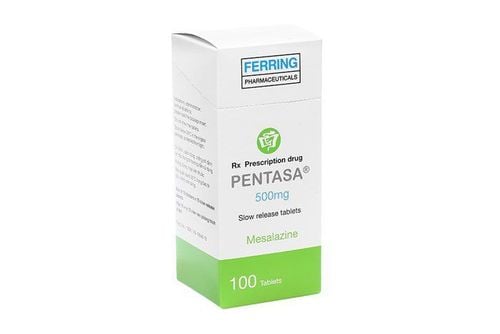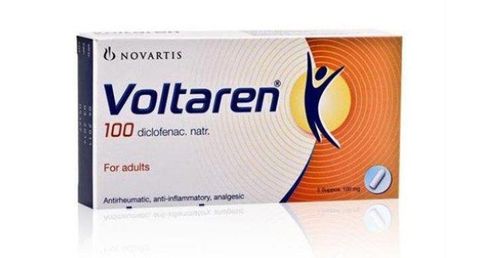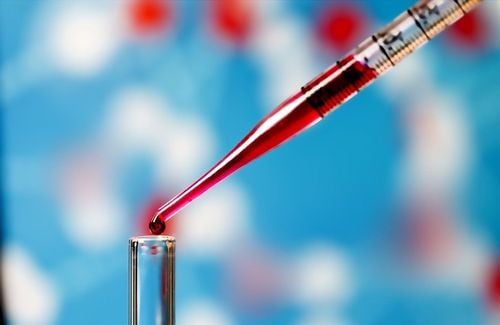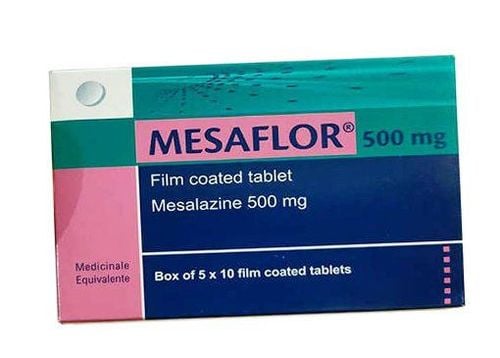This is an automatically translated article.
The article is written by Master, Doctor Mai Vien Phuong - Gastroenterologist - Department of Medical Examination & Internal Medicine - Vinmec Central Park International General Hospital.Blood chemistry test is one of the common tests ordered by doctors when it is necessary to diagnose disease and monitor the effectiveness of treatment. The following article will provide more information for readers about the role of biochemical indicators in the diagnosis of bleeding ulcerative colitis.
1. Clinical manifestations of bleeding ulcerative colitis
Hemorrhagic ulcerative colitis is characterized by diffuse and superficial inflammatory lesions of the colonic mucosa, beginning in the rectum and extending to other segments of the colon.The small intestine is usually not involved, although the terminal ileum may have superficial inflammatory lesions. Based on the extent of colonic lesions, ulcerative colitis can be classified into the following types: Proctitis (localized lesions in the rectum), sigmoid colitis - rectum or left colon. (spread to the splenic angle) or diffuse/global colitis. The extent of the lesion is not only related to severity but also affects wages and treatment options. Symptoms and course of disease are related to the extent and severity of inflammatory lesions.
Symptoms of the disease are often insidious, although the disease may appear acutely after an episode of infectious colitis or diarrhea during travel. Proctitis causing bloody stools is the most common symptom of patients. The degree of bloody stools can be severe, profuse or moderate, with bloody and mucusy stools. The patient may have frequent urge to defecate and strain or increase the frequency of defecation. The more widespread the colonic lesion, the more severe the diarrhea, while if the patient is simply proctitis, the symptoms may alternate between episodes of constipation with episodes of bloody stools.
Abdominal pain before defecation or a feeling of abdominal distension will occur when the disease is advanced. In advanced or fulminant cases, the patient may present with systemic symptoms such as night sweats, fever, vomiting, nausea, weight loss accompanied by diarrhea. In addition, may experience extra-gastrointestinal symptoms such as in the eyes, skin, joints, liver.
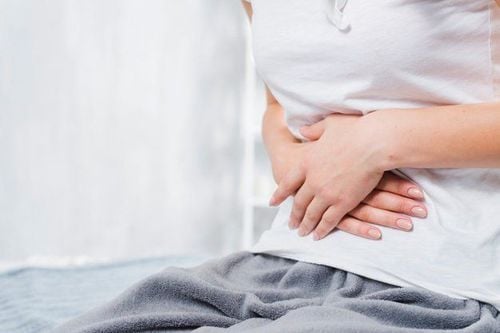
Ulcerative sigmoid colitis - also known as left-sided colitis occurs in 40% of cases, patients may have symptoms alternating between constipation and diarrhea accompanied by abdominal bloating, stomach upset. bowel movements, bloody stools. Left iliac fossa colic and extra-gastrointestinal symptoms were more common than those with ulcerative proctitis alone.
Ulcerative colitis is diagnosed when the inflammatory lesion extends as far as the transverse colon or the right colon. Patients often present with diarrhea, bloody stools, painful defecation, abdominal fullness, abdominal cramps or localized pain. In addition, patients in this group often have weight loss, systemic symptoms, extra-gastrointestinal symptoms, and anemia.
Toxic megacolon is the most severe complication of hemorrhagic ulcerative colitis when the inflammatory lesion spreads from the superficial mucosa to the submucosa and muscle layer. This complication often occurs in patients with disseminated colitis or severe colitis. Clinical manifestations include fever, exhaustion, severe abdominal cramps, abdominal distention, and local or total abdominal pain.
2. Laboratory tests
Initial tests for patients with ulcerative colitis include a complete blood count, electrolytes, liver and kidney function tests, iron levels, vitamin D, and C-reactive protein (CRP) and blood pressure. calprotectin in feces. Immunological and microbiological tests to rule out C. difficile should also be performed.2.1. Inflammatory indices In patients with mild or moderate bleeding ulcerative colitis, inflammatory indices may remain within the normal range. A CBC may show thrombocytosis due to a chronic inflammatory response or to varying degrees of anemia. If leukocytosis is seen, attention should be paid to infectious complications.
In hemorrhagic ulcerative colitis, except for the group of patients with only localized lesions in the rectum, the CRP index is correlated with clinical severity. Elevated CRP is also correlated with increased erythrocyte sedimentation rate, anemia, and hypoalbuminemia. This is considered a prognostic marker in severe cases with acute development. CRP above 10 mg/l after 1 year in patients with pancolitis predicts an increased risk of requiring surgery.
However, both CRP and erythrocyte sedimentation rate are not specific enough to differentiate bleeding ulcerative colitis from infectious or other causes of colitis.
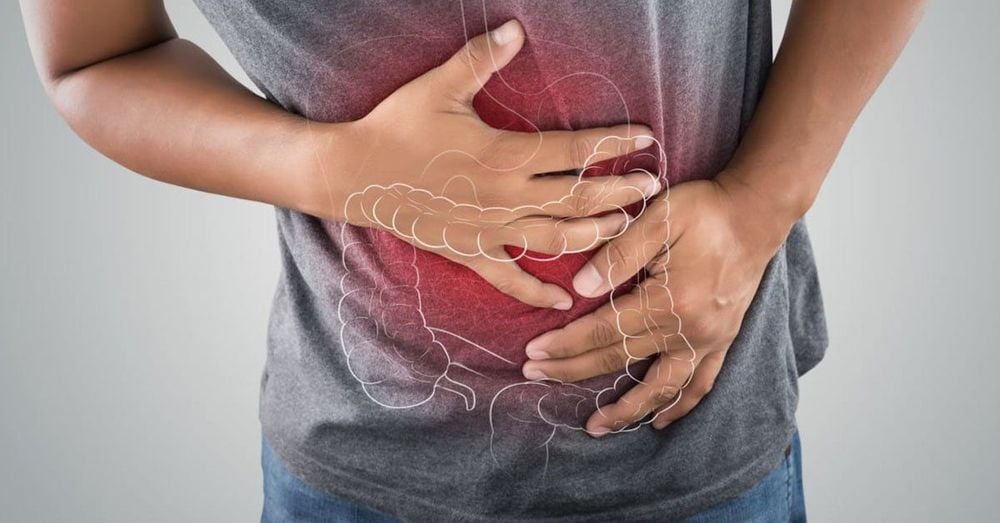
Besides the direct test for leukocytes in stool with methylene blue, currently, there are a number of stool tests that help detect leukocytes in the stool and are used to assess the severity of clinical IBD. ready. Calprotectin, derived from granulocytes, is a calcium-binding protein used as a diagnostic marker for cases of diarrhea caused by inflammatory bowel disease.
In addition, this index also partly reflects the “inflammation level” of the colon. Therefore, it can be applied as a non-invasive monitoring method during treatment. Likewise, lactoferrin, a protein from neutrophils, has been shown to help in the differential diagnosis between IBD and irritable bowel syndrome.
2.3. Microbiological testing As recommended by ECCO in 2017, microbiological tests should be performed to rule out Difficile and Cytomegalovirus (CMV) each outbreak. C. difficile infection is becoming a major health concern because of its high mortality rate, so screening for C. difficile should be done if the patient is resistant to treatment or has an exacerbation of the disease.
CMV reactivation may occur in patients with bleeding ulcerative colitis receiving immunosuppressive agents. Although CMV reactivation is not the cause of sudden outbreaks, new CMV infection can make the disease worse or become resistant to treatment. Therefore, patients on immunosuppressive therapy with flare-ups of symptoms should be examined and ruled out for CMV infection. Histopathological examination or immunohistochemical staining is more optimal than using PCR in blood.
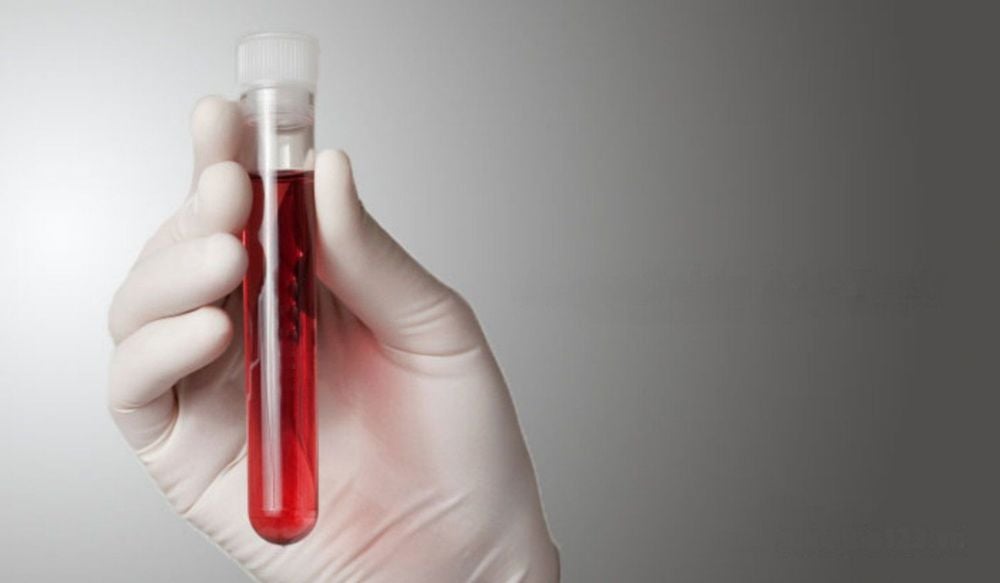
However, the positive rate of ASCA in other small bowel lesions such as Celiac is also quite high (40 - 60%). Besides being a cue to help differentiate between IBD and other intestinal diseases, these biomarkers are also prognostic tools during treatment. High levels of pANCA are correlated with the risk of colostomy and ileostomy after total colectomy. Several other biomarkers are also being studied in IBD patients, such as antibodies to the outer membrane of the E.coli envelope (outer membrane 0 E.coli cell wall) or J2 peptide which is an RNA sequence derived from conjugates. related to Pseudomonas fluorescens. Both of these markers have been shown to be more associated with Crohn's than ulcerative colitis and are not very effective in differentiating the types of IBD.
The application of biomarkers in differentiating between ulcerative colitis and Crohn's is still difficult, especially in the group of patients with atypical colitis.

Up to now, there is no specific medicine to completely cure bleeding ulcerative colitis. Treatment can only help limit the disease, reduce pain for the patient. Therefore, in addition to the treatment prescribed by the doctor, the patient needs to follow a good diet for the digestive system, avoid stress and need to have regular health checkups.
As soon as there are symptoms, it is necessary to go to the doctor soon for timely treatment when the damage has not spread. Vinmec International General Hospital with a team of highly specialized and leading medical doctors, along with modern medical equipment and international standards, readers can trust to choose as a destination for medical examination and treatment. Treat yourself and your family.
>> See more: Efficacy of Thiopurine monotherapy in ulcerative colitis - Posted by Master, Doctor Mai Vien Phuong - Department of Examination & Internal Medicine - Vinmec Central Park International General Hospital
Please dial HOTLINE for more information or register for an appointment HERE. Download MyVinmec app to make appointments faster and to manage your bookings easily.






